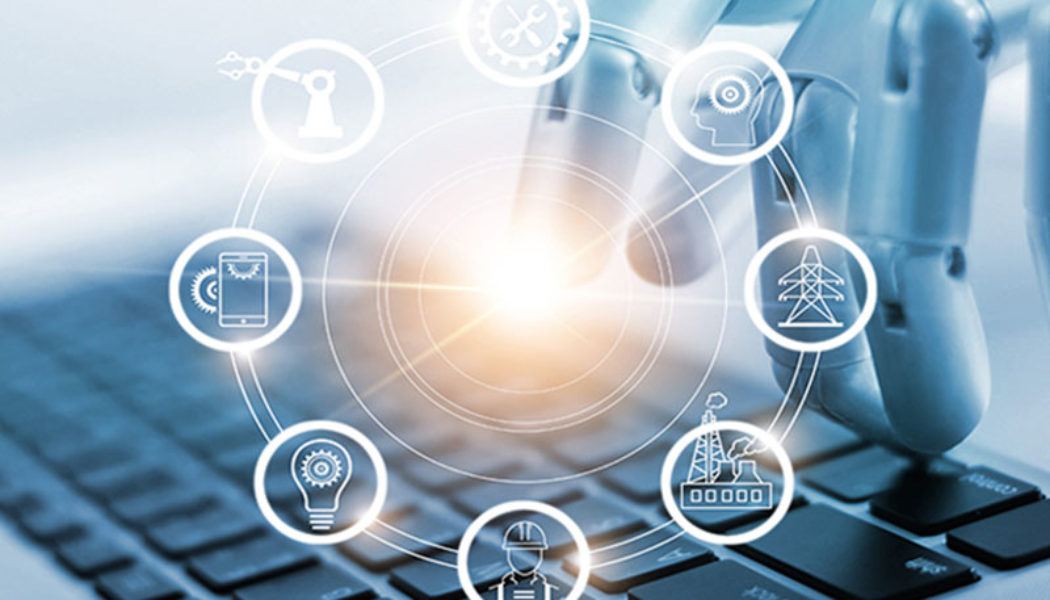When embarking on an industrial digitisation project, it’s important to consider how people, processes, and technology will work together. These three considerations are integrated in a somewhat symbiotic manner, which is why each should function optimally and compliment the other.
A good example is IIoT; the technology promises secure access to a lot of data but is this data providing the right insight to people as opposed to burying them under a heap of information?
Also, how do you ensure insights are delivered to workers whenever and wherever they need them, such as on the plant floor where they are working around production equipment.
HMIs and Industrial Automation
Enter Human-Machine Interfaces (HMIs); a technology developed to replace hard-wired pushbuttons and indicator lights with an improved interface to interact with and control processes.
However, early HMIs were confined to control rooms or plant floor control panels. It wasn’t portable or mobile and staff had to physically interact with the HMI to read information.
Today, HMIs have evolved to become so much more than programmable replacements for pushbuttons and lights. It is used to translate complex data into useful information. Plus, easy-to-understand visual displays give meaning and context to near real-time information and insights into how well processes are running.
With the advanced capabilities of HMIs, managers, and supervisors not only gain invaluable insight but also benefit from:
- New opportunities to improve the quality of products and systems.
- Mobile technologies that give workers access to guidance or remote expertise wherever they may be working (inside or even outside the facility).
- HMIs function as powerful edge computers gathering and processing data in real-time to support advanced processes such as predictive maintenance.
- The powerful processing and networking capabilities of HMIs needed to provide new levels of information to workers anywhere in the plant.
Impactful decisions today
HMIs enable employees to identify problems quickly and easily; supporting them to make the right decisions which lead to improved processes and ultimately competitive products and services.
The technology connects people, applications, and machines across different locations. HMIs also assist users in choosing the best hardware, data sources, networks, and software for their needs.
Schneider Electric’s Harmony P6 Industrial PC with integrated HMI helps industrial companies improve productivity and operational efficiency. It supports people with the performance, networking, and display capabilities needed to get the most from digital transformation.
Harmony P6 has been designed to clearly provide plant staff with the guidance they require to do the best job possible. It is a key component of any end-to-end cybersecurity transparent plant data network that allows for more efficient operations and maintenance of capital assets.
Also, when combined with Schneider Electric’s EcoStruxure Automation Expert architecture, users can seamlessly deploy the computing capabilities they need for calculating intensive applications.
This not only includes clearly presented real-time performance information for industrial systems but also the guidance staff need to improve performance and address problems before costly downtime occurs.
Harmony P6 industrial PC and software with end-to-end cybersecurity in the cloud and on-premises ensures the people, processes, and technology work together in a seamless and highly efficient manner.
By Sbo Chilli, Product Manager: EcoStruxure – IDHMI & IDMST at Schneider Electric
Edited by Zintle Nkohla
Follow Zintle Nkohla on Twitter
Follow IT News Africa on Twitter











Tagged: Applications and machines, cybersecurity, data sources, Digital Transformation, Hardware, Human-Machine Interfaces (HMIs), IIoT, Industrial digitisation, Iot, IT, IT News, mobile technologies, Powerful Edge Computers, Processing Complex Data, Products and systems, Schneider Electric’s Harmony P6 Industrial PC, Software, tech news, technology, Visual displays